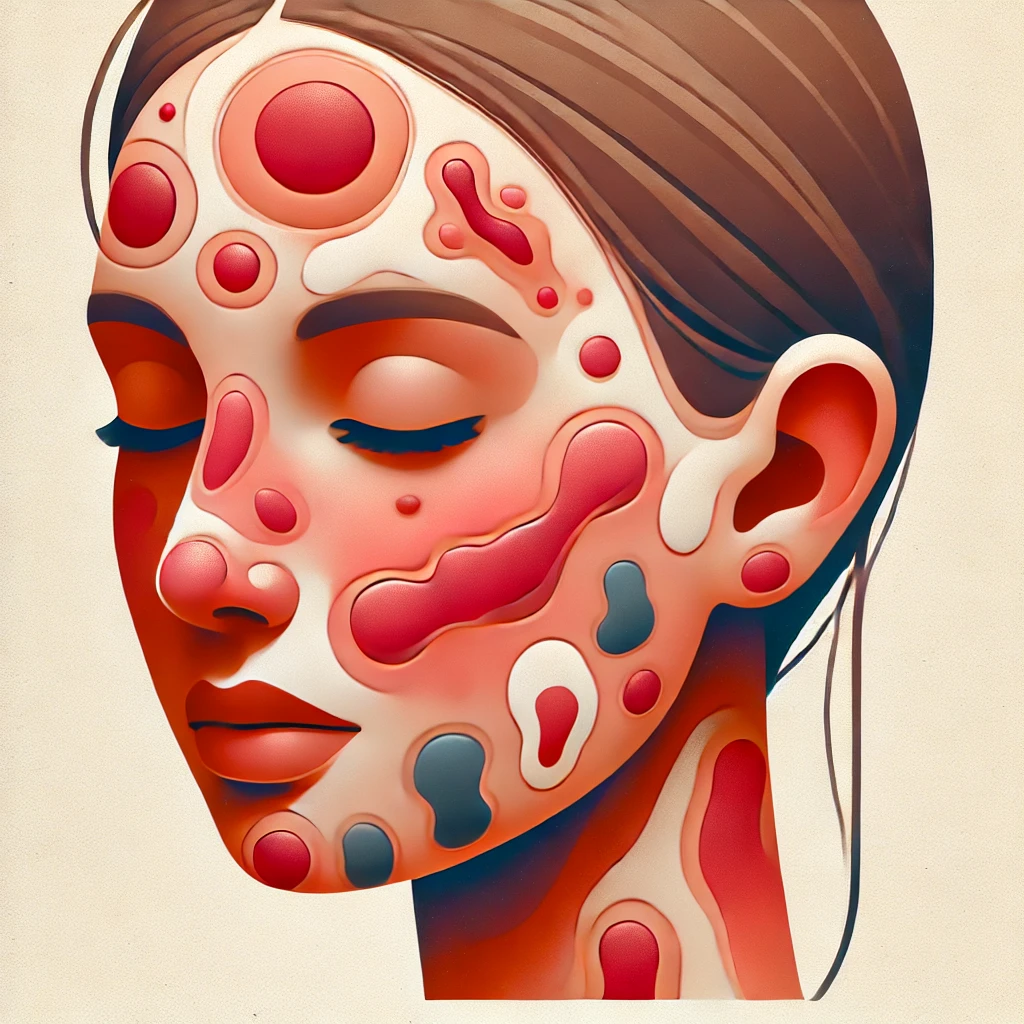Don’t Mix These Ingredients
When it comes to skincare, ingredients are the backbone of a good routine. However, while many ingredients work wonders on their own, some combinations can cause irritation, reduce effectiveness, or even lead to adverse skin reactions. Knowing which ingredients should never be mixed is crucial for maintaining a healthy, glowing complexion. In this article, we’ll explore some of the most common skincare ingredient clashes and why they shouldn’t be used together.
Retinol and Vitamin C

Why they don’t mix:
- Retinol (a form of Vitamin A) is known for its anti-aging and acne-fighting properties, while Vitamin C is an antioxidant that brightens the skin and combats free radicals. Both are powerhouse ingredients in their own right. However, when used together, they can clash due to their differing pH levels.
- Vitamin C, particularly in its most potent form (L-ascorbic acid), requires a low pH to be effective, typically around 3.5. On the other hand, retinol works best at a higher pH level of around 5.5-6. These differences in pH can neutralize the effects of both ingredients, rendering them less effective.
What happens when combined:
- When used together, Vitamin C can destabilize retinol, making it less effective. Additionally, this combination can cause irritation, redness, and dryness, especially for those with sensitive skin.
Alternative approach:
- It’s best to use Vitamin C in the morning (since it provides protection against environmental damage) and retinol at night when the skin is in repair mode.
Benzoyl Peroxide and Retinol

Why they don’t mix:
- Benzoyl peroxide is an effective acne-fighting ingredient that kills acne-causing bacteria and helps to clear pores. Retinol, on the other hand, promotes cell turnover and prevents clogged pores. While both are useful for acne-prone skin, using them together is a recipe for disaster.
- Benzoyl peroxide is an oxidizing agent, which means it can degrade retinol, making it ineffective. Moreover, both ingredients are extremely drying on their own, and combining them can exacerbate this effect, leading to excessive dryness, irritation, and peeling.
What happens when combined:
- Overdrying and increased skin sensitivity. Your skin’s moisture barrier can become compromised, leading to redness and irritation.
Alternative approach:
- Use benzoyl peroxide in the morning and retinol at night. This way, you still get the benefits of both without overwhelming your skin.
Niacinamide and Vitamin C

Why they don’t mix:
- Niacinamide (Vitamin B3) is a soothing, anti-inflammatory ingredient that strengthens the skin’s barrier and evens out skin tone. Vitamin C is a brightening agent that helps with hyperpigmentation. In theory, these ingredients sound like a perfect match. However, older studies suggested that combining them could cause the ingredients to cancel each other out, reducing their efficacy.
- Though recent research shows this interaction may not be as problematic as once thought, using highly concentrated forms of these ingredients together can still cause irritation in sensitive skin types.
What happens when combined:
- Potential irritation, especially for sensitive skin. Although not necessarily harmful, combining these two might lead to decreased potency or sensitivity.
Alternative approach:
- If you have sensitive skin, it’s best to use niacinamide in the morning and Vitamin C at night or alternate days to prevent any potential reactions.
AHAs/BHAs and Retinol

Why they don’t mix:
- Alpha Hydroxy Acids (AHAs) like glycolic acid and lactic acid, and Beta Hydroxy Acids (BHAs) like salicylic acid, are exfoliating acids that help to slough off dead skin cells and unclog pores. Retinol, on the other hand, increases cell turnover. Both of these actions are beneficial but extremely potent.
- Combining AHAs/BHAs with retinol can lead to over-exfoliation, as the skin is being encouraged to shed dead cells at an accelerated rate from multiple pathways. This can weaken the skin barrier and cause extreme dryness, redness, peeling, and sensitivity to external factors like sun exposure.
What happens when combined:
- Over-exfoliation and increased risk of sun damage due to a weakened skin barrier. Your skin can become dry, irritated, and more prone to inflammation.
Alternative approach:
- It’s better to alternate between these ingredients on different nights. For example, you can use AHAs/BHAs on one night and retinol on the next, giving your skin time to recover in between.
Salicylic Acid and Glycolic Acid (or other AHAs)

Why they don’t mix:
- Both salicylic acid (a BHA) and glycolic acid (an AHA) are exfoliants that work by removing dead skin cells. Salicylic acid penetrates deeply into pores, making it great for acne-prone skin, while glycolic acid exfoliates the surface. When combined, the risk of over-exfoliation increases drastically.
- These acids have different mechanisms of action, but both can be quite harsh on the skin. Using them together can lead to an over-exfoliation that weakens the skin barrier, causing irritation, redness, and a heightened sensitivity to the sun.
What happens when combined:
- Over-exfoliation, which can manifest as redness, peeling, and even breakouts due to the compromised skin barrier.
Alternative approach:
- Instead of layering these acids, use them on alternating days. This allows your skin to reap the benefits without being overwhelmed.
Vitamin C and AHAs/BHAs

Why they don’t mix:
- Vitamin C works best in a slightly acidic environment but not in the highly acidic conditions that AHAs and BHAs create. AHAs and BHAs can lower the skin’s pH significantly, which may degrade Vitamin C and reduce its efficacy.
- Using exfoliating acids with Vitamin C can also irritate the skin, as both ingredients can be quite active. This can lead to redness, stinging, and increased sensitivity.
What happens when combined:
- The degradation of Vitamin C’s antioxidant properties and heightened skin irritation. This combination can cause your skin to become more sensitive to the sun and environmental stressors.
Alternative approach:
- Use Vitamin C in the morning and your exfoliating acids at night. This way, your skin gets the best of both ingredients without the risk of irritation or reduced effectiveness.
Retinol and Peptides

Why they don’t mix:
- Peptides are short chains of amino acids that help to build collagen and improve skin’s elasticity. Retinol, on the other hand, promotes cell turnover and collagen production. While they seem like a match made in heaven, retinol can break down peptides, rendering them less effective.
- Retinol is a strong active that can cause some irritation, while peptides are more delicate and work best in a calmer environment.
What happens when combined:
- Retinol’s aggressive cell turnover might interfere with the effectiveness of peptides, as it may destabilize them before they can work their magic.
Alternative approach:
- Use peptides in the morning and retinol at night to get the benefits of both without diminishing their effects.
Copper Peptides and Vitamin C

Why they don’t mix:
- Copper peptides are known for their wound-healing and anti-inflammatory properties, while Vitamin C is a brightening antioxidant. However, Vitamin C can potentially oxidize copper peptides, reducing their effectiveness and even creating free radicals that can damage the skin.
What happens when combined:
- Reduced efficacy of both ingredients and potential oxidative damage to the skin. This combination might do more harm than good.
Alternative approach:
- Use copper peptides in your nighttime routine and Vitamin C during the day to avoid any unwanted interactions.
Take Away
The world of skincare can be overwhelming with so many active ingredients that promise transformative results. However, mixing the wrong ingredients can lead to irritation, sensitivity, and ineffective results. By understanding how different ingredients interact with each other, you can create a routine that works harmoniously to bring out your best skin. Stick to the golden rule: when in doubt, alternate! Avoid layering conflicting ingredients, and remember to patch test any new products to minimize the risk of adverse reactions. Your skin will thank you for it.

